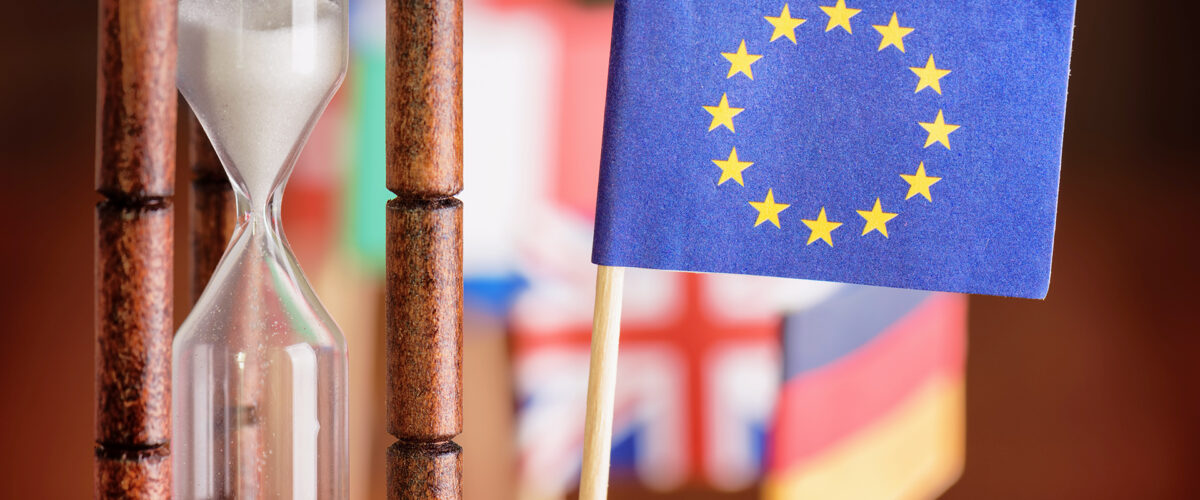Artikel | 13 november 2020
Increased Restrictions on the Use and Manufacture of Products Containing PFOA

A new EU regulation concerning the use and manufacture of perfluorooctanoic acid (PFOA), its salts and related compounds, came into effect on 4 July 2020. 1
Perfluorooctanoic acid is an industrial surfactant used in chemical processes and as a material feedstock, for instance in the production of pharmaceuticals. It contains a stable bond between carbon and fluorine that is only breakable using high-energy input and is therefore not degradable in the natural environment. The International Agency for Research on Cancer (IARC), part of the World Health Organization, has classified PFOA as “possibly carcinogenic to humans”, based on limited evidence in human studies that it can cause testicular and kidney cancer. The European Union (EU) has also classified it as toxic for reproduction in category 1B.2
PFOAs and related compounds are widely used as a water-, oil- and stain-repellent surface finish for medical garments, in adhesives, and for other uses such as apparel, paint and paper.
The new regulation imposes stricter limitations on the use of PFOAs, particularly for manufacturing purposes, and sets new limit values for the occurrence of PFOAs in products sold within the European internal market. A general ban has been imposed on manufacturing, placing on the market and the use of substances containing PFOAs, other than as an unintentional trace contaminant at levels lower than 0.025 mg/kg or for PFOA-related compounds lower than 1 mg/kg. The penalty for violating the regulation is a fine or imprisonment of up to two years.3 However, the EU regulator has provided certain affected industries with a transitionary period of between a few months and up to 16 years.
Some exemptions from the general ban include:
- invasive and implantable medical devices until 4 July 2025;
- the use of PFOA for the manufacture of PTFE4 and PVDF5 for the production of items such as membranes for medical textiles until 4 July 2023;
- the use of PFOA at levels lower than 20 mg/kg in substances used as transported isolated intermediates for the production of fluorochemicals with a carbon chain equal to or shorter than six atoms (this derogation shall be reviewed and reassessed by the Commission no later than 5 July 2022);6
- the use of perfluorooctyl bromide containing perfluorooctyl iodide for the purpose of producing pharmaceutical products, until 31 December 2036 at the latest (the exemption will also be subject to a review every four years);
- medical devices (also non-invasive or non-implantable) until 3 December 2020; and
- the use of articles already in use before 4 July 2020.
The concept of “already in use” in the last exemption refers to any “processing, formulation, consumption, storage, keeping, treatment, filling into containers, transfer from one container to another, mixing, production of an article or any other utilisation”.7 I.e., the derogation provides some additional time to use up stock already manufactured. Anyone relying on this exemption should ensure they have documentation proving that the articles in question were in use before the regulation came into force.
All of the other exemptions are limited in time. It is therefore advisable for businesses to start aligning with the regulatory requirements as soon as possible.
If you have any questions on the use or manufacture of PFOAs or other regulated chemical substances, please do not hesitate to contact us.
1 COMMISSION DELEGATED REGULATION (EU) 2020/784 of 8 April 2020 amending Annex I to Regulation (EU) 2019/1021 of the European Parliament and of the Council as regards the listing of perfluorooctanoic acid (PFOA), its salts and PFOA-related compounds).
2 European Chemicals Agency, Member State Committee Support Document for Identification of Pentadecafluorooctanoic Acid (pfoa) as a Substance of Very High Concern because of its cmr1 and pbt2 Properties, adopted on 14 June 2013, p. 4. Link here.
3 wedish Environmental Act (SFS 1998:808) 29 chapter 3 § 4 item.
4 Polytetrafluoroethylene.
5 Polyvinylidene fluoride.
6 In simplified terms, PFOAs are allowed at low levels for the production of alternatives to PFOA.
7 Article 2(6) of REGULATION (EU) 2019/1021 OF THE EUROPEAN PARLIAMENT AND OF THE COUNCIL of 20 June 2019 on persistent organic pollutants and Article 3 of REGULATION (EC) No 1907/2006 OF THE EUROPEAN PARLIAMENT AND OF THE COUNCIL of 18 December 2006 concerning the Registration, Evaluation, Authorisation and Restriction of Chemicals (REACH), establishing a European Chemicals Agency, amending Directive 1999/45/EC and repealing Council Regulation (EEC) No 793/93 and Commission Regulation (EC) No 1488/94 as well as Council Directive 76/769/EEC and Commission Directives 91/155/EEC, 93/67/EEC, 93/105/EC and 2000/21/EC.


